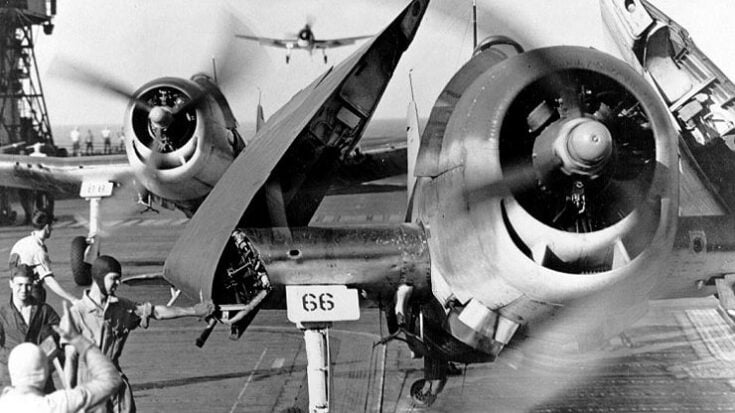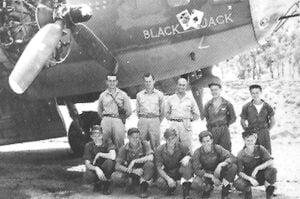How a Genius Engineering Created the Plane That Secured Victory in the Pacific

USN, Public domain, via Wikimedia Commons
The outcome of the Pacific air war was shaped not only by bravery but by innovation. One of the most significant breakthroughs came from the design of the Grumman F6F Hellcat, a carrier-based fighter that gave Allied forces a decisive edge. Its creation combined practical engineering, pilot feedback, and a clear understanding of the challenges of naval aviation. The Hellcat’s performance was not an accident; it was the result of deliberate design choices that allowed it to outperform its adversaries and survive the harsh conditions of the Pacific theater.
Innovation Behind the Wings
A key feature of the Hellcat was its “Sto-Wing” folding wing mechanism. Leroy Grumman, one of the founders of the Grumman Aircraft Engineering Corporation, developed this system while experimenting with simple materials, such as a paper clip and rubber eraser, to find the proper pivot angle. The design allowed the wings to fold flat alongside the fuselage, dramatically increasing the number of aircraft that could fit on a carrier. This innovation was first tested on the F4F-4 Wildcat prototype in 1941 and later became an essential feature of the F6F Hellcat and other naval aircraft. Its simplicity and reliability made it a model for future folding wing systems.
The ability to efficiently store aircraft on a carrier was crucial in a theater where naval air power dominated. Space on carrier decks was limited, and every additional aircraft improved a task force’s offensive and defensive capability. Grumman engineers combined mechanical ingenuity with an understanding of operational needs, creating a system that worked under the repeated stress of carrier takeoffs, landings, and the corrosive saltwater environment.

The Fighter That Outperformed Its Rival
The F6F Hellcat is widely credited with establishing air superiority in the Pacific. It was designed to counter the Japanese Mitsubishi A6M Zero, which had dominated the skies early in the war. Engineers including Leroy Grumman, Jake Swirbul, and Bill Schwendler collaborated closely with Navy pilots, incorporating lessons learned from combat encounters with the Zero into the aircraft’s design. The Hellcat was built for speed, durability, and effectiveness in the demanding conditions of carrier warfare.
The heart of the Hellcat was its Pratt & Whitney R-2800 Double Wasp radial engine, producing 2,000 horsepower and later 2,200 horsepower with water injection. This power gave the aircraft a high climb rate, strong acceleration, and superior dive speed, allowing it to exploit tactical advantages against more maneuverable enemy fighters. Pilots learned to use “boom and zoom” tactics, diving from higher altitude to strike quickly and then climbing out of danger, a method that minimized the Zero’s advantages at low speed.
Durability and Pilot Protection
Another significant innovation was the Hellcat’s rugged construction. Unlike the lightly armored Zero, the Hellcat featured 212 pounds of cockpit armor, a bullet-resistant windshield, and self-sealing fuel tanks. These measures increased pilot survivability, allowing many to return to base in aircraft that would have been lost in lighter designs. Carrier operations, with repeated takeoffs and landings on moving decks, required stability, and the Hellcat delivered with wide-set, hydraulically actuated landing gear. Combined with the folding wing mechanism, this made it both practical and resilient in naval combat.
Equipped with six .50-caliber machine guns and later versions capable of carrying 20mm cannons, bombs, and rockets, the Hellcat could deliver significant firepower. Its combination of speed, protection, and armament allowed pilots to engage the enemy effectively while maintaining a strong defensive capability. The result of this engineering and tactical integration was impressive: Hellcats achieved a 19:1 kill-to-loss ratio and destroyed more than 5,000 enemy aircraft during the war.

Engineering and Tactical Integration
The F6F Hellcat exemplifies how thoughtful engineering, operational testing, and tactical planning can combine to create an effective warplane. Every feature, from the folding wings to the armored cockpit, contributed to performance and survivability. By integrating pilot experience into design, Grumman engineers ensured that the Hellcat was not only a technically advanced aircraft but one suited to real-world combat conditions. The success of the Hellcat illustrates how innovation in engineering and design directly influenced the outcome of battles, shaping the course of the Pacific air war.



















